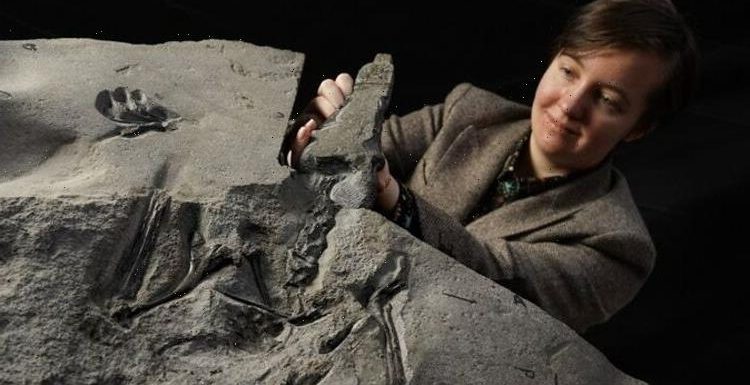
Perfectly preserved dinosaur embryo discovered in China
We use your sign-up to provide content in ways you’ve consented to and to improve our understanding of you. This may include adverts from us and 3rd parties based on our understanding. You can unsubscribe at any time. More info
Pterosaur, more popularly known as a pterodactyl, was a spectacular flying dinosaur that lived during the Jurassic period around 170 million years ago. Researchers found an incredible fossil of the giant winged creature on the Isle of Skye. This particular pterodactyl had an estimated wingspan of more than 2.5 metres, making it the largest of its kind ever discovered from the Jurassic period.
Experts say that the fossil is the best-preserved skeleton of a pterosaur found in Scotland.
The unique specimen, discovered during a National Geographic Society-funded excavation in 2017, will now be added to National Museums Scotland’s collection and studied further.
The find is described in a new paper published in Current Biology authored by scientists from the University of Edinburgh, National Museums Scotland, the Hunterian Museum in Glasgow, the University of St Andrews and Staffin Museum on the Isle of Skye.
Speaking about the ground-breaking discovery, University of Edinburgh PhD student Natalia Jagielska, who was the lead author in a new paper featuring the fossil, described the finding as one of the “best pterosaurs that has been discovered in centuries”.


Ms Jagielska said: “The finding has pieced together a huge gap in fossil records for us.
“I am glad that the world is going to see one of the best pterosaurs that has been discovered in centuries.
“Britain hasn’t seen this kind of preservation of pterosaurs in 200 years.
“It’s a discovery of the century, this doesn’t really happen.”
Pterosaurs were the first vertebrates to evolve powered flight, some 50 million years before birds.

They lived throughout the Mesozoic era – the so-called age of reptiles – as far back as the Triassic Period, about 230 million years ago.
Professor Steve Brusatte, Personal Chair of Palaeontology and Evolution, School of GeoSciences, University of Edinburgh, said: “This is a superlative Scottish fossil.
“The preservation is amazing, far beyond any pterosaur ever found in Scotland and probably the best British skeleton found since the days of Mary Anning in the early 1800s.
“Dearc is the biggest pterosaur we know from the Jurassic period and that tells us that pterosaurs got larger much earlier than we thought, long before the Cretaceous period when they were competing with birds, and that’s hugely significant.”
DON’T MISS:
Putin sends horrifying warning to West after nuclear missile launch [INSIGHT]
Heart disease: Oxford Uni finds eating veggies offers no protection [REVEAL]
Archaeology breakthrough as metal detectorist unearths gold brooch [SPOTLIGHT]


After the fossil was salvaged, it was brought to the University of Edinburgh for analysis and description.
CT scans of the skull have revealed large optic lobes, which indicate that Dearc would have had good eyesight.
The specimen will be the subject of further study by PhD student Natalia Jagielska, which aims to reveal more about Dearc’s behaviour, particularly how it lived and flew.
She adds: “To achieve flight, pterosaurs had hollow bones with thin bone walls, making their remains incredibly fragile and unfit to preserving for millions of years.
“And yet our skeleton, ~160 million years on since its death, remains in almost pristine condition, articulated and almost complete.
“Its sharp fish-snatching teeth still retaining a shiny enamel cover as if he were alive mere weeks ago.”
Source: Read Full Article